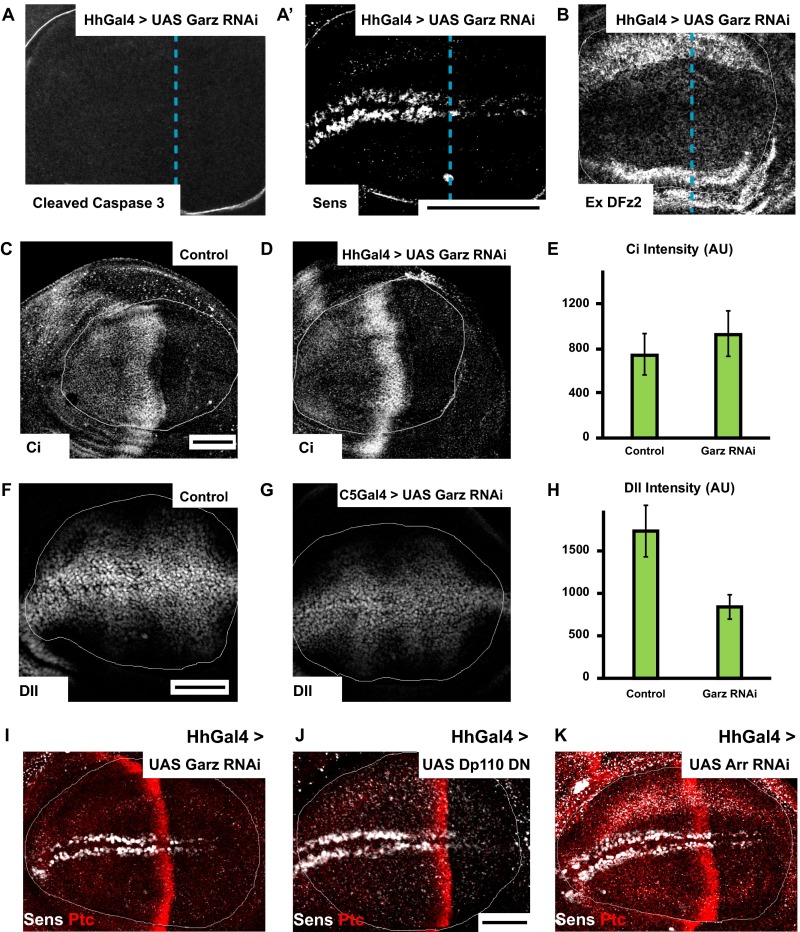Fig. S5.
Garz and class I PI3K perturbations affect Wg signaling (supplementary to Fig. 6). (A and B) Confocal sections of wing discs driving Garz RNAi in the posterior compartment using HhGAL4 (A) immunostained for apoptotic marker cleaved caspase 3 (A) along with Wg downstream signaling readout Senseless (A′) and (B) surface-stained for extracellular DFz2. Garz depletion in the posterior compartment does not cause apoptosis, nor does it alter extracellular DFz2 levels, whereas reducing Wg signaling compared with the anterior. (C–E) Confocal sections of wing discs driving Garz RNAi in the posterior compartment using HhGAL4 immunostained for Hh downstream signaling readout Cubitus interruptus (Ci) does not alter the extent of signaling compared with the control wing discs (HhGAL4/+), as quantified in E, indicating that Hh secretion is not affected by Garz depletion in the posterior compartment. (F–H) Confocal sections of wing discs driving Garz RNAi using C5GAL4 immunostained for long-range Wg signaling readout Distalless (Dll), showing that Dll expression is reduced upon Garz depletion. P < 10−4 in H. (I–K) Confocal sections of wing discs driving Garz RNAi (I) or Dp110 DN (J) or Arrow RNAi (K) in the posterior compartment using HhGAL4 shows similar reduction in expression of Senseless. The A/P compartment boundary is demarcated by Ptc staining. All images are background-subtracted with intensities appropriately scaled for representation. Posterior compartment is to the right in all wing discs. Dashed blue line approximately indicates the A/P compartment boundary. (Scale bars, 50 μm.)

